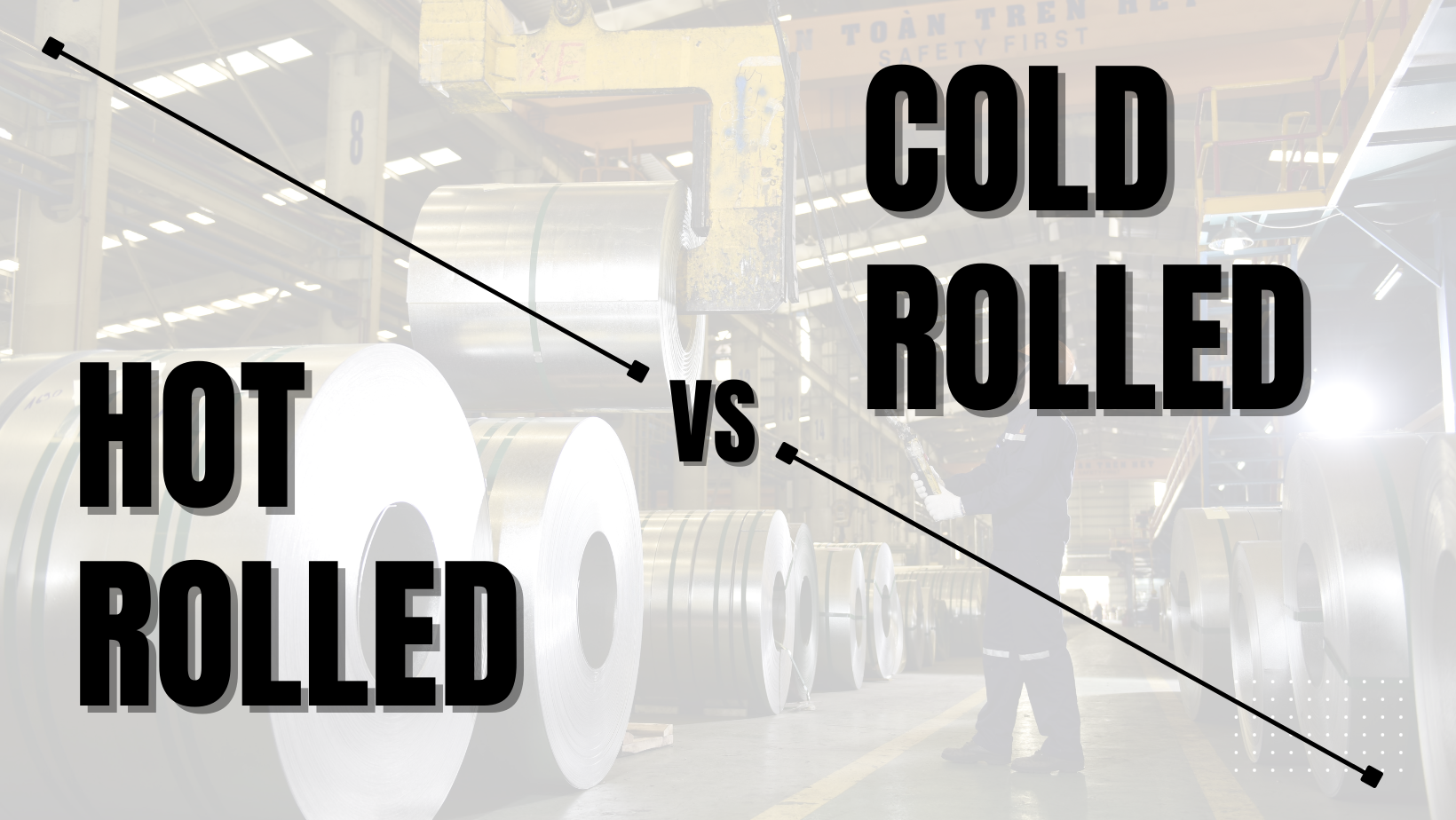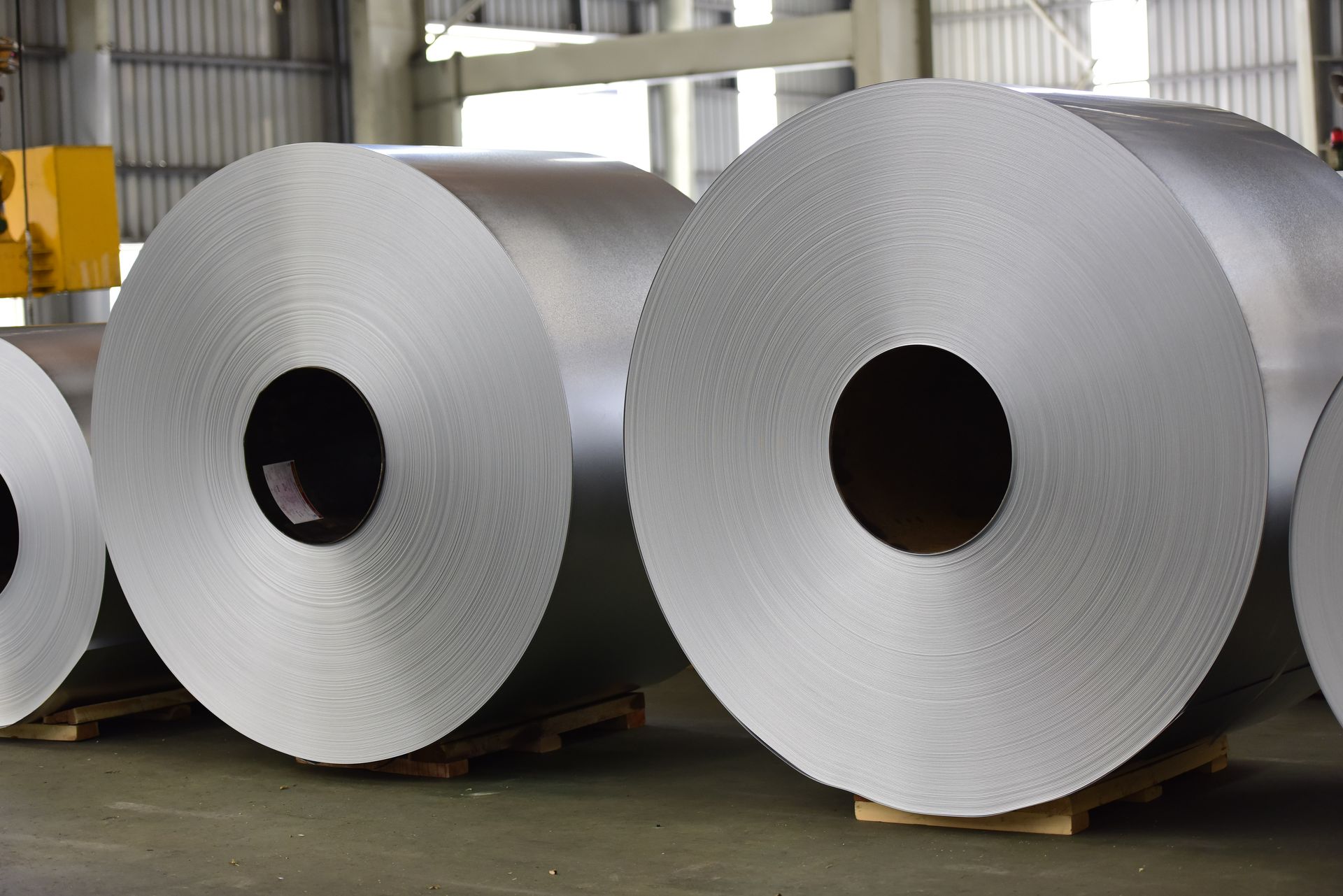Rolling is the process of making hot rolled steel and cold rolled steel. In essence, hot rolled steel or cold rolled steel is the name for the manufacturing process, which is one of the final stages in steel fabrication.
In the first stage, the steel materials are put into the furnace to be heated to form billets. Afterward is then cold rolled and shaped to produce hot rolled steel and cold rolled steel of all shapes.
Hot rolled steel is made through a rolling process at temperatures above 1000 degrees. At this temperature, steel is easily formed. In the rolling stage, depending on the production purpose, the manufacturer proceeds to put the materials into hot rolling or continues cold rolling, because different production processes will produce products with different shapes and properties.
Hot rolled steel is the raw material for the production of cold rolled steel. Cold rolled is made after the hot rolling stage, produced by gradually reducing the steel thickness at lower and sometimes close to room temperature. This process makes the steel structure harder and stronger, not changing the steel structure but only deforming. The cold rolling process often uses specialized solutions to cool, in order to control the temperature to decrease evenly, ensuring that the internal steel structure and the steel surface are not broken.
The process of creating hot-rolled steel to serve the automotive industry and roofing, rails, I, H-shaped steel …. Hot rolled steel is the raw material to continue to produce welded pipe and cast steel pipe. In addition, it is also a raw material for the production of cold rolled steel coils.
Cold rolled steel is mainly used to create products that are flat sheets such as steel plates, coils, thin flat steel plates..., round and square details, products with smooth surfaces, etc.
|
Criteria
|
Hot rolled steel
|
Cold rolled steel
|
|
Tolerance |
Greater tolerance due to the manufacturing process, the hot temperature cools down by it, so the steel deforms itself uncontrollable
|
Smaller tolerances due to reduced process temperatures and tight control over the effects of the coolant
|
|
Accuracy
|
Accuracy is not as high as cold rolled steel
|
High accuracy
|
|
Price
|
Lower cost on finished products
|
Finished products have a higher cost.
|
|
Features
|
Standard features
|
Has superior features in terms of durability, surface, less error, decorative, malleable and less prone to breakage during processing.
|
|
Normal thickness
|
1.4-9.0mm
|
0.115-3.0mm
|
|
Surface, color
|
Rough surface, bluish-gray color turn red rust after long time (billet)
|
Smooth surface, light gray
|
|
Edge
|
The two edges of the roll are often rounded, rough, and rusty when left for a long time.
|
Usually trimmed with straight edges and sharp edges
|
|
Storing
|
Hot rolled coils can be left outdoors for a long time. No packaging required.
|
Cold rolled products are usually packaged and kept indoors. Unused surfaces will rust very quickly
|
ADVANTAGES AND APPLICATION OF HOT ROLLED STEEL
Hot rolled steel is a type of steel that is manufactured without any delays in the process and does not require reheating like cold rolled steel. It is essentially normalized as it is allowed to cool at room temperature; this means it's free from internal stresses caused by quenching or work-hardening processes.
Cold rolled steel is essentially hot rolled steel that has been further processed by being allowed to cool at room temperature and annealed or temper rolled. Cold rolling produces steel with closer dimensional tolerances and a wider range of surface finishes than hot rolling. It is also up to 20% stronger than hot rolled through the use of strength hardening.
|
Criteria
|
Hot rolled steel
|
Cold rolled steel
|
|
Advantages
|
Hot rolled steel tends to be cheaper than cold rolled steel because it is manufactured without any delays in the process and does not require reheating like cold rolled steel. It is also essentially normalized as it is allowed to cool at room temperature; this means it’s free from internal stresses that can arise from quenching or work-hardening processes. |
Cold rolled steel typically results in a product with a better, more finished surface with tighter tolerances. It also yields smoother surfaces that are oily to the touch. Other advantages include:
|
|
Application
|
Hot rolled steel tends to be cheaper than cold rolled steel because it is manufactured without any delays in the process and does not require reheating like cold rolled steel. It can be used in applications where precise shapes and tolerances are not required, such as:
|
Cold rolled steel is used in applications where tolerances, surface conditions, concentricity, and straightness are factors. It also offers a more aesthetic and visually appealing surface. Other applications include:
|
HOW TO CHOOSE QUALITY COILS?
In order to choose the right quality coil steel for your use, it is important to pay attention to the following characteristics.
Pay attention to the number of kilograms, the number of metter to calculate the density (kg/m), tensile strength G (N/mm2) and the stiffness of the steel coil. The density will help control whether the thickness is appropriate.
Determine the uses to choose the right type of coil: hot rolled coil, cold rolled coil or galvanized coil. Steel coils will usually come from a factory whose production scale and quality meet steel standards. If you need to find quality steel products, Hoa Sen is a good choice.
WHERE TO BUY STEEL COILS?
Hoa Sen Group is the no.1 company in the field of manufacturing and trading steel sheet in Vietnam and the leading exporter of steel sheet in Southeast Asia.
Founded on August 8, 2001, over 20 years of establishment and development, Hoa Sen Group is constantly rising its position in both domestic and international markets, affirming the stature of a global growth company of World Economic Forum...
Currently, the products of Hoa Sen Group have been exported to more than 87 countries and territories around the world. Export Turnover Ratio accounts for nearly 60% of total revenue in Hoa Sen Group.
Hoa Sen's products always meet the strictest standards of quality such as: ASTM standard of the US, EN of Europe, JIS standard of Japan, etc.
In summary, hot rolled steel or cold rolled steel both have their advantages and disadvantages. Choosing the steel depends on your need to suit the function of each type and costs

